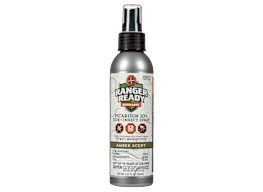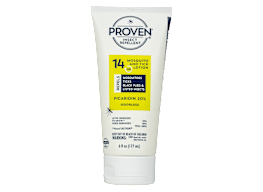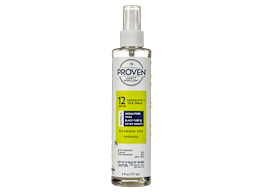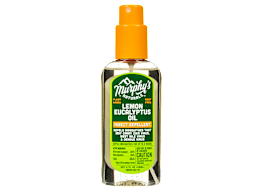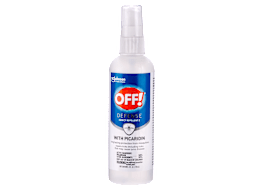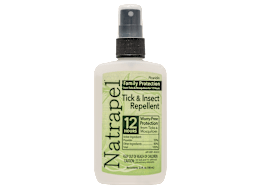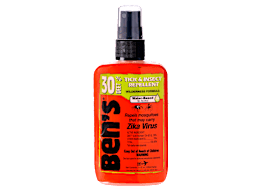What You Need to Know About Bug Spray for Kids
Annoyed by bug bites but worried about chemicals? Here's how to protect children from ticks and mosquitoes.
When you shop through retailer links on our site, we may earn affiliate commissions. 100% of the fees we collect are used to support our nonprofit mission. Learn more.

You probably already know how important it is to use bug spray to reduce the risk of catching a disease from a mosquito or tick and to help avoid their pesky, itchy bites. Still, you may also be worried about the chemicals used in insect repellent—particularly if you have kids.
The good news: Experts say that insect repellents registered with the Environmental Protection Agency—including those containing deet—pose little hazard when used appropriately.
Reduce the Chance of Exposure
A couple of steps that don’t involve repellents can help discourage bug-to-kid contact in the first place, so you can start with these.
For instance, get rid of any standing water in your yard, Asta says, and remove receptacles where water can collect and allow mosquitoes to breed—such as empty buckets, bird baths, and unused tires. To make the area less hospitable to ticks, clean up any dead leaves or overgrown brush, and mow long grasses. (Read more about anti-tick yard modifications you can make.)
If you’re going to be in an area where there may be a lot of mosquitoes, have kids wear long-sleeved shirts and long pants. If you’re going hiking or into the woods or tall grasses, make sure they also tuck shirts into pants, wear closed-toe shoes, and tuck pants into long socks to help keep ticks from biting.
Showering and performing tick checks soon after coming in from wooded or otherwise tick-heavy areas has been shown to help reduce the chances of catching a tick-borne disease, so help your kids check themselves for attached ticks.
Choose Safe and Effective Repellents
In CR’s testing, the products that provide the longest-lasting protection have one of three active ingredients: deet, oil of lemon eucalyptus (OLE), or picaridin.
Deet products earn most of our top scores, with concentrations of 25 to 30 percent providing the most reliable and longest-lasting protection—repelling mosquitoes for longer than 6½ hours for some products we tested. Two of four repellents we’ve tested with 15 percent deet have also earned our recommendation.
Four OLE products and four with picaridin also earn our recommendation, providing 5 or more hours of protection. CR members can check our insect repellent ratings for the full details.
But what about safety? Here’s what the experts say.
Deet
The safety of this chemical, which has been available to consumers in insect repellents since 1965, has been thoroughly studied over the years. In the 1980s and 1990s, however, after a handful of health problems—such as seizures and brain damage—were reported in children who’d been exposed to deet, some parents became concerned about the ingredient. And some people still worry.
But according to the Environmental Protection Agency, those problems typically occurred after people failed to follow label instructions and used too much deet (PDF). An extensive 1998 EPA review of deet’s safety (PDF) estimated that deet-related seizures are exceedingly rare, likely to occur in only about 1 in 100 million users. And according to the Center for Disease Control’s 2017 update on the toxicity of deet (PDF), the overall risk of any problems appears to be quite low.
“To me, that puts it in perspective,” says Jerome Goddard, PhD, an extension professor of entomology at Mississippi State University—meaning that the benefits of preventing potentially life-threatening diseases transmitted by the bugs are likely to outweigh any risks, especially when deet is used as directed.
The CDC and EPA (and Consumer Reports) agree that deet is safe to use on kids as long as you follow the label instructions (see more on how below).
And take common sense precautions, advises Joe Conlon, a former Navy entomologist and former technical adviser to the American Mosquito Control Association. “You should not leave bottles of this stuff around kids, because it is harmful if swallowed,” he says.
Picaridin
According to the EPA (PDF), picaridin, a synthetic chemical that resembles a compound found in pepper, causes few known side effects. But it can irritate eyes and skin. It hasn’t been studied as fully as deet, but health experts generally consider it to be safe for kids.
Oil of Lemon Eucalyptus
The evidence suggests that this ingredient, a synthetic version of a chemical derived from the lemon eucalyptus plant, is safe for use on those ages 3 and older. But it’s not approved for children younger than that. And note that this ingredient isn’t the same as lemon eucalyptus essential oil, which isn’t registered as an insect repellent by the EPA.
Natural Products
To avoid using chemicals, you may gravitate toward more “natural” products, like those containing ingredients such as lemongrass oil, citronella oil, and peppermint oil. In CR’s tests, however, repellents with essential oils as their active ingredients provided fewer hours of protection than the most effective products.
Use Bug Spray on Kids the Right Way
Once you’ve chosen an insect repellent for your child, take steps to maximize effectiveness and safety:
- The American Academy of Pediatrics advises refraining from using repellent on infants younger than 2 months. One option, Asta says, is to cover your infant’s stroller with netting when in buggy outdoor areas.
- Have an adult apply repellents to kids. For spray or lotion formula, adults should apply the repellent to their own hands, then rub it onto the child’s skin.
- Apply repellents only to exposed skin or on the outside of clothing.
- Avoid putting repellent on children’s hands, since they might then put their hands in their mouths. Don’t apply to any cuts, wounds, or irritated skin, or close to children’s mouths.
- Apply spray repellent in an open area to avoid inhaling it.
- Wash off repellent with soap and water at the end of the day when kids come inside, and launder clothes sprayed with repellent before they’re worn again.
- Know that not all formulations of repellents (sprays, lotions, or wipes) are equally effective. Of the lotions and wipes Consumer Reports has tested, only those whose active ingredient is deet performed well enough to earn our recommendation.
How to Keep Ticks Out of Your Yard
Ticks love tall grass and cool, damp areas. On the "Consumer 101" TV show, Consumer Reports expert Catherine Roberts explains how to make your yard less inviting to these pests.

















